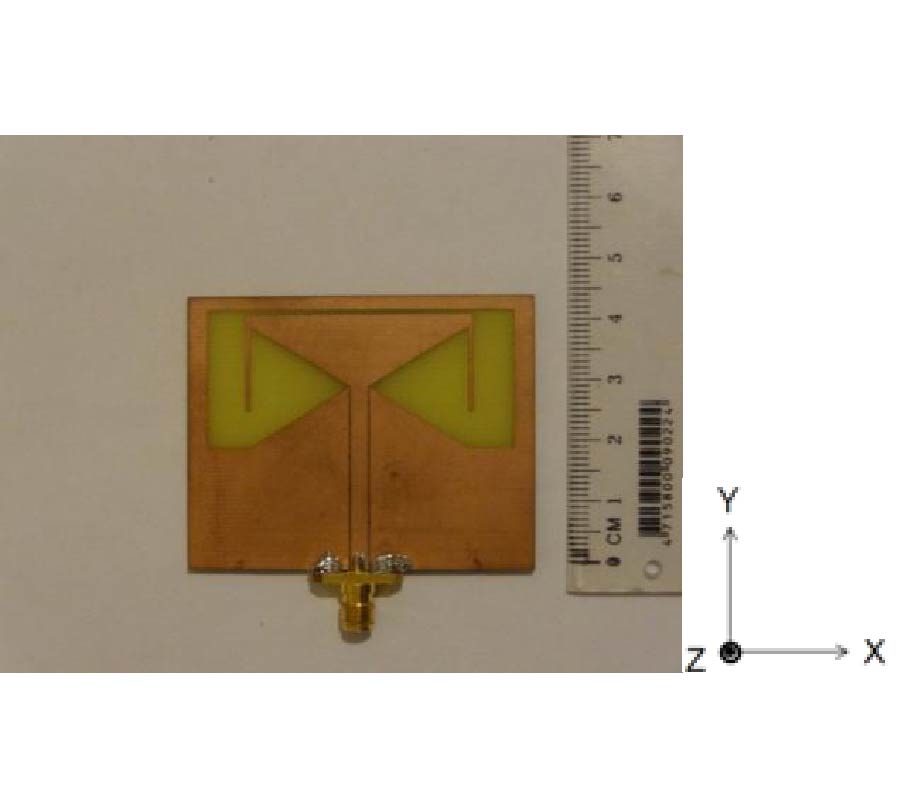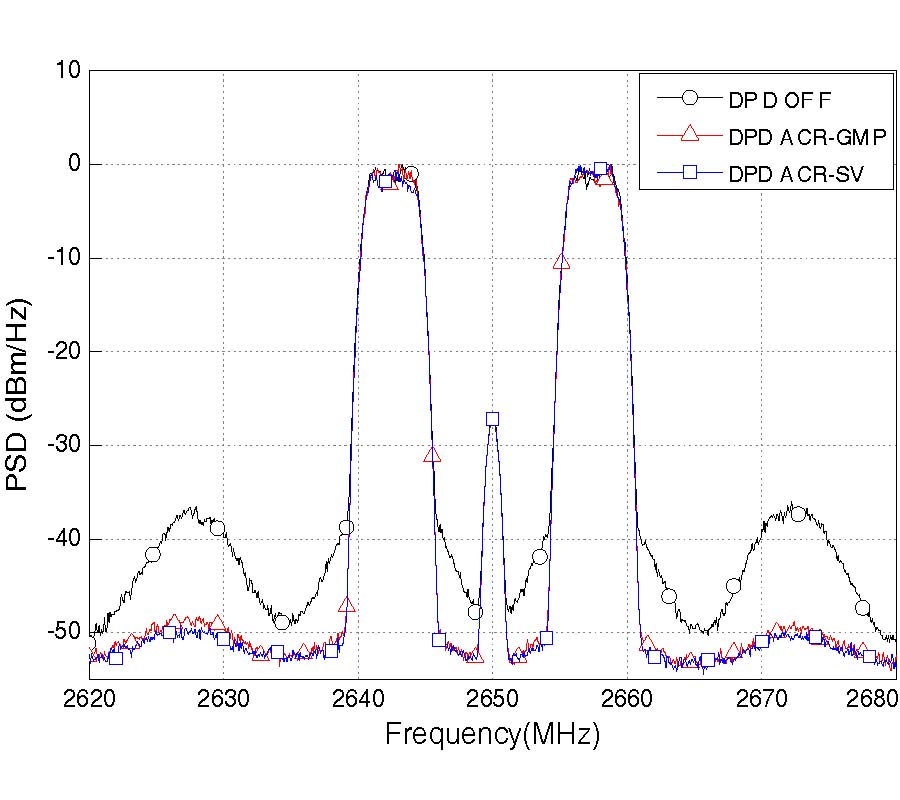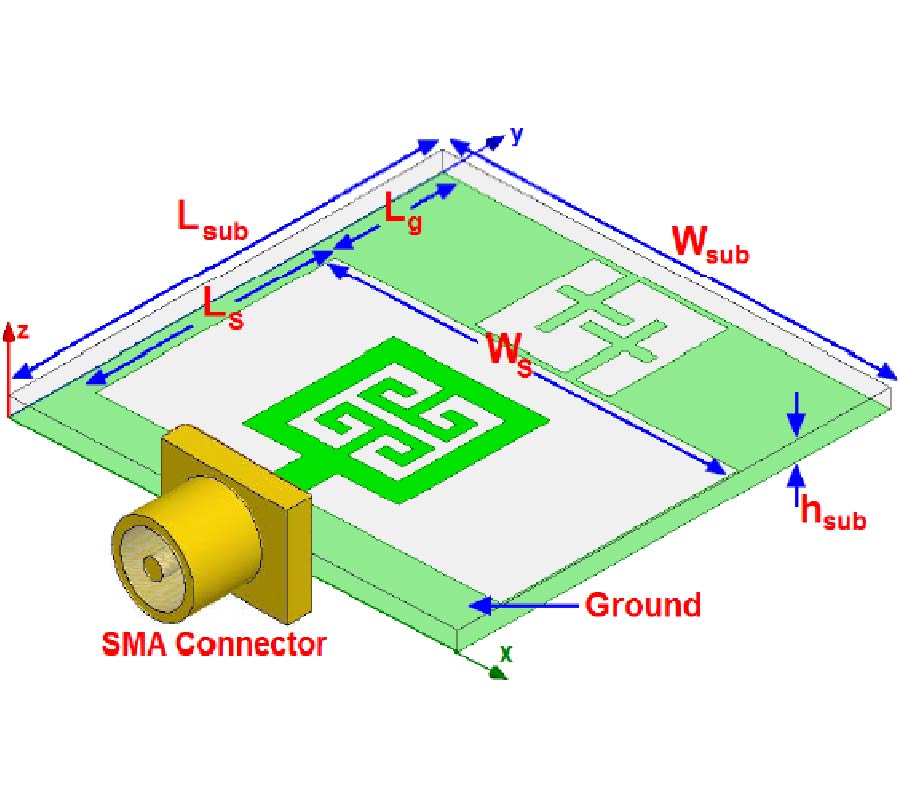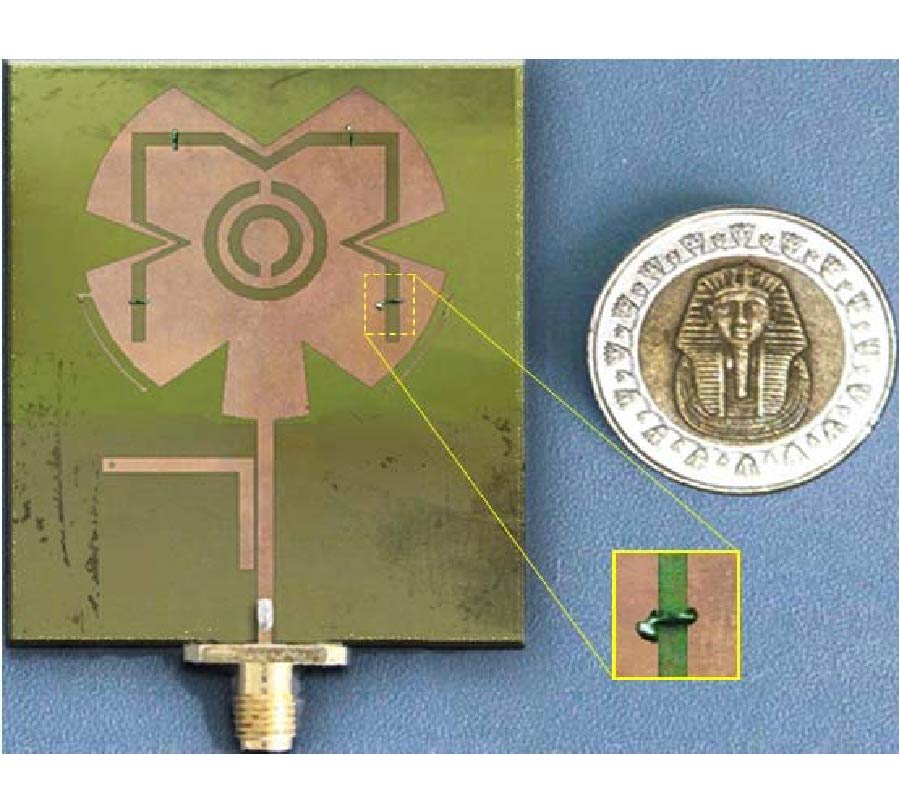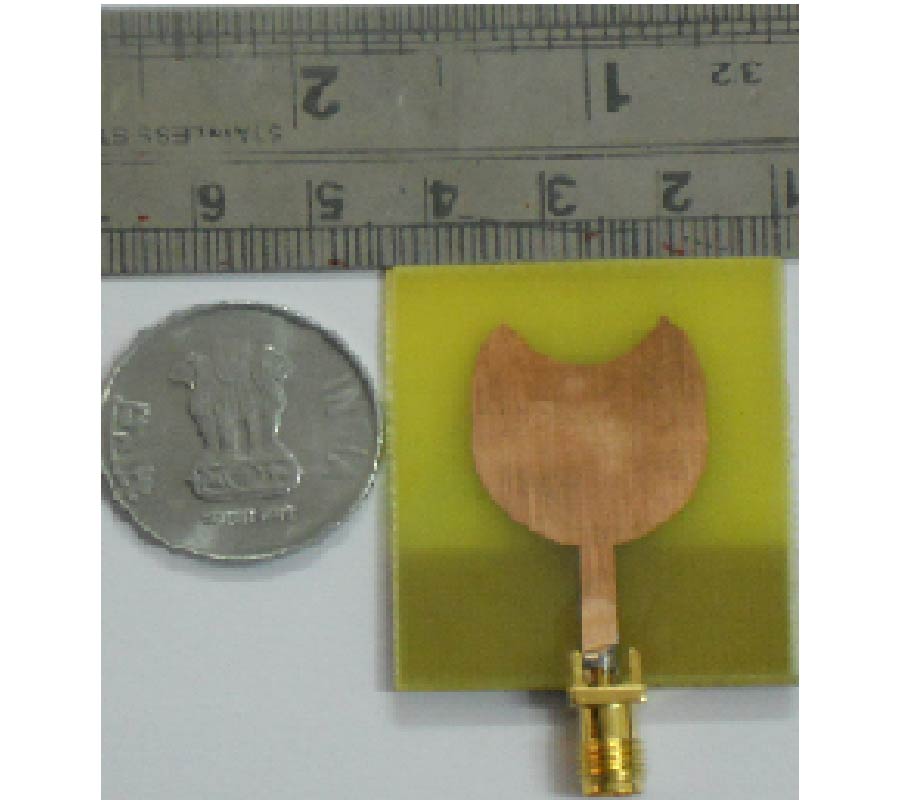Compact Planar Monopole UWB Antenna with Quadruple Band-Notched Characteristics
Mahendra Mohan Sharma,
Jitendra Kumar Deegwal,
Ashok Kumar and
Mahesh Chandra Govil
A compact planar monopole UWB antenna with quadruple band-notched characteristics is analyzed and presented. By introducing a C-shaped slot, nested C-shaped slot in the radiating patch and U-shaped slot in the feed line, quadruple band-notched characteristics are achieved at frequencies of 2.5, 3.7, 5.8 and 8.2 GHz. The proposed antenna has been fabricated and tested. Measured impedance bandwidth of the antenna is 2.35-12 GHz, which covers Bluetooth and UWB band, for VSWR < 2 and also has four stop bands of 2.44-2.77, 3.42-3.97, 5.45-5.98 and 8-8.68 GHz, for VSWR > 2, for rejecting 2.5/3.5 GHz WiMAX, WLAN and ITU 8 GHz band signals, respectively. The average gain of this antenna is 4.30 dBi with a variation of ±1.8 dBi over the whole impedance bandwidth. Significant gain reduction over the rejected band is also observed. The antenna shows good omnidirectional radiation patterns in the passband with a compact size of 40 mm × 34 mm.

